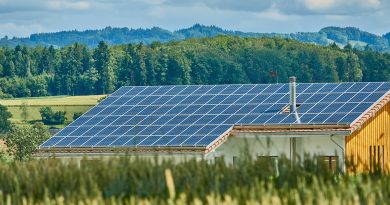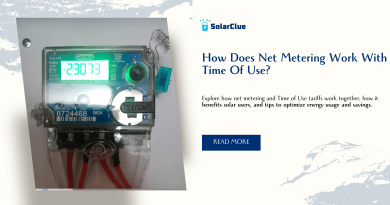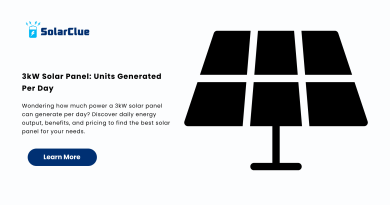Should Solar Panels Be Connected In Series or Parallel?
When designing a solar power system, choosing the right configuration for connecting your solar panels is critical to ensuring optimal performance. This guide will explore the two main methods for connecting solar panels—series and parallel connections—and help you understand the advantages, disadvantages, and practical applications of each. We’ll also cover how to determine the best configuration based on your system size, inverter requirements, and desired power output.
Table of Contents
- 1 Series vs. Parallel Connections: A Comparison
- 2 The Impact of Series and Parallel Connections on Voltage and Current
- 3 Choosing the Right Configuration for Your Solar System
- 4 The Role of Inverters in Determining the Optimal Configuration
- 5 The Impact of Shading on Series and Parallel Connections
- 6 Safety Considerations for Solar Panel Connections
- 7 Troubleshooting Common Connection Issues
- 8 The Future of Solar Panel Connection Configurations
- 9 Case Studies of Successful Solar Panel Installations
- 10 Table: Series vs. Parallel Solar Panel Connections
- 11 Conclusion
- 12 FAQ Section
Series vs. Parallel Connections: A Comparison
Series Connections:
- How It Works: In a series connection, solar panels are connected end-to-end, with the positive terminal of one panel connected to the negative terminal of the next.
- Voltage and Current:
- Voltage: The voltages of each panel add up, while the current remains the same as that of a single panel.
- Example: If each panel has a voltage of 20V and a current of 5A, connecting three panels in series results in 60V and 5A.
Parallel Connections:
- How It Works: In a parallel connection, the positive terminals of all the panels are connected together, and the negative terminals are also connected together.
- Voltage and Current:
- Voltage: The voltage remains the same as that of a single panel, while the current adds up.
- Example: If each panel has a voltage of 20V and a current of 5A, connecting three panels in parallel results in 20V and 15A.
The Impact of Series and Parallel Connections on Voltage and Current
Series Connection:
- Voltage Increase: Ideal for systems requiring higher voltage, such as those with string inverters that need a specific voltage range to operate efficiently.
- Current Constant: The current remains the same as a single panel, which reduces the risk of high current-related losses.
Parallel Connection:
- Current Increase: Suitable for low-voltage applications where higher current is needed, such as systems using MPPT charge controllers.
- Voltage Constant: Keeps the voltage low, which may be necessary for certain inverters or battery charging systems.
Choosing the Right Configuration for Your Solar System
System Size and Inverter Requirements:
- String Inverters: These inverters typically require higher voltage, making series connections more suitable.
- Microinverters: Designed for individual panels, microinverters work well with parallel connections since they convert the DC from each panel to AC independently.
- Hybrid Inverters: Capable of working with both grid-tied and off-grid systems, hybrid inverters may require a combination of series and parallel connections depending on system design.
Desired Power Output:
- High Voltage Systems: For grid-tied systems or long cable runs, series connections are often preferred to keep the current low and reduce cable losses.
- High Current Systems: For off-grid systems with batteries, parallel connections may be better to match the voltage of the battery bank and to increase current for faster charging.
The Role of Inverters in Determining the Optimal Configuration
Matching Voltage and Current:
- Inverter Voltage Window: Inverters have a specific voltage range within which they operate efficiently. Series connections help achieve this by increasing the system’s overall voltage.
- Power Rating: Ensure that the combined power output of your panels (whether in series or parallel) does not exceed the inverter’s maximum input capacity.
Efficiency Considerations:
- MPPT Inverters: Maximum Power Point Tracking (MPPT) inverters adjust the voltage and current to maximize power output, which can make series connections more efficient in varying sunlight conditions.
The Impact of Shading on Series and Parallel Connections
Series Connection Sensitivity:
- Shading Impact: In a series configuration, shading on one panel can significantly reduce the output of the entire string, as the current is limited by the shaded panel.
- Bypass Diodes: These are often used in series-connected panels to allow current to bypass the shaded panel, minimizing power loss.
Parallel Connection Resilience:
- Shading Impact: In a parallel configuration, shading on one panel has less impact on the overall system because each panel operates independently.
- Design Flexibility: Parallel connections offer more flexibility in placement and orientation, which can be advantageous in partially shaded areas.
Safety Considerations for Solar Panel Connections
Overcurrent Protection:
- Fuses and Circuit Breakers: Ensure that your system includes appropriate fuses and circuit breakers to protect against overcurrent, especially in parallel configurations where current is higher.
- Wiring Gauge: Use wires with an adequate gauge to handle the current in parallel configurations, preventing overheating and potential fire hazards.
Grounding:
- Proper Grounding: Both series and parallel systems require proper grounding to prevent electrical faults and improve safety.
- Surge Protection: Install surge protectors to safeguard your system against voltage spikes, particularly in areas prone to lightning strikes.
Troubleshooting Common Connection Issues
Low Power Output:
- Series Connection: Check for shading or faulty panels, as one malfunctioning panel can reduce the entire string’s output.
- Parallel Connection: Inspect connections and wiring for loose or damaged components that could disrupt current flow.
Inverter Not Starting:
- Voltage Issues: Ensure that the series-connected voltage meets the inverter’s minimum start voltage.
- Current Issues: Verify that the parallel-connected current does not exceed the inverter’s input current rating.
The Future of Solar Panel Connection Configurations
Advances in Inverter Technology:
- Smart Inverters: Future inverters may offer more flexibility in handling both series and parallel connections, optimizing system performance automatically.
- DC-Optimized Systems: Emerging technologies like DC optimizers could enable more efficient parallel connections by managing voltage and current at the panel level.
Modular Solar Systems:
- Plug-and-Play Solutions: Future solar systems may feature modular, plug-and-play designs that simplify the connection process and allow for easy scaling of solar capacity.
Case Studies of Successful Solar Panel Installations
Residential Solar System:
- Location: Suburban home in California
- Configuration: Series connection with a string inverter
- Outcome: High efficiency and seamless grid integration, with minimal shading issues due to careful panel placement.
Off-Grid Cabin System:
- Location: Remote cabin in Colorado
- Configuration: Parallel connection with an MPPT charge controller
- Outcome: Optimized battery charging and resilience against partial shading from nearby trees.
Table: Series vs. Parallel Solar Panel Connections
| Aspect | Series Connection | Parallel Connection |
|---|---|---|
| Voltage | Adds up across panels (e.g., 20V + 20V = 40V) | Stays the same as a single panel (e.g., 20V) |
| Current | Stays the same as a single panel (e.g., 5A) | Adds up across panels (e.g., 5A + 5A = 10A) |
| Best Suited For | High voltage systems, grid-tied systems | Low voltage, high current systems, off-grid |
| Shading Impact | Higher (affects entire string) | Lower (affects only shaded panels) |
| Inverter Compatibility | String inverters | Microinverters, MPPT controllers |
| Cable Losses | Lower due to higher voltage | Higher due to increased current |
| Flexibility in Placement | Less flexible (sensitive to shading) | More flexible (individual panel performance) |
| Safety Considerations | Lower current means less risk of overheating | Higher current requires thicker wiring and protection |
Conclusion
Understanding the differences between series and parallel connections is essential for optimizing your solar power system’s performance. The choice between these configurations depends on various factors, including system size, inverter requirements, shading, and safety considerations. By carefully selecting the right configuration for your needs, you can maximize energy production, improve efficiency, and ensure that your solar system meets your energy goals effectively.
FAQ Section
1. What is the difference between series and parallel solar panel connections?
In a series connection, the voltage of each panel adds up, while the current remains the same. In a parallel connection, the current adds up, while the voltage remains the same as a single panel.
2. Which connection is better for my solar system?
The optimal connection depends on your system requirements. Series connections are ideal for high-voltage systems, while parallel connections are better for low-voltage, high-current applications.
3. How does shading affect series and parallel connections?
Shading has a greater impact on series connections because it can reduce the output of the entire string. Parallel connections are less affected because each panel operates independently.
4. Why do I need an inverter in my solar system?
An inverter converts the direct current (DC) produced by your solar panels into alternating current (AC), which is the standard form of electricity used in homes and businesses.
5. Can I mix series and parallel connections in the same system?
Yes, many solar systems use a combination of series and parallel connections to optimize voltage and current levels for the inverter and other components.



